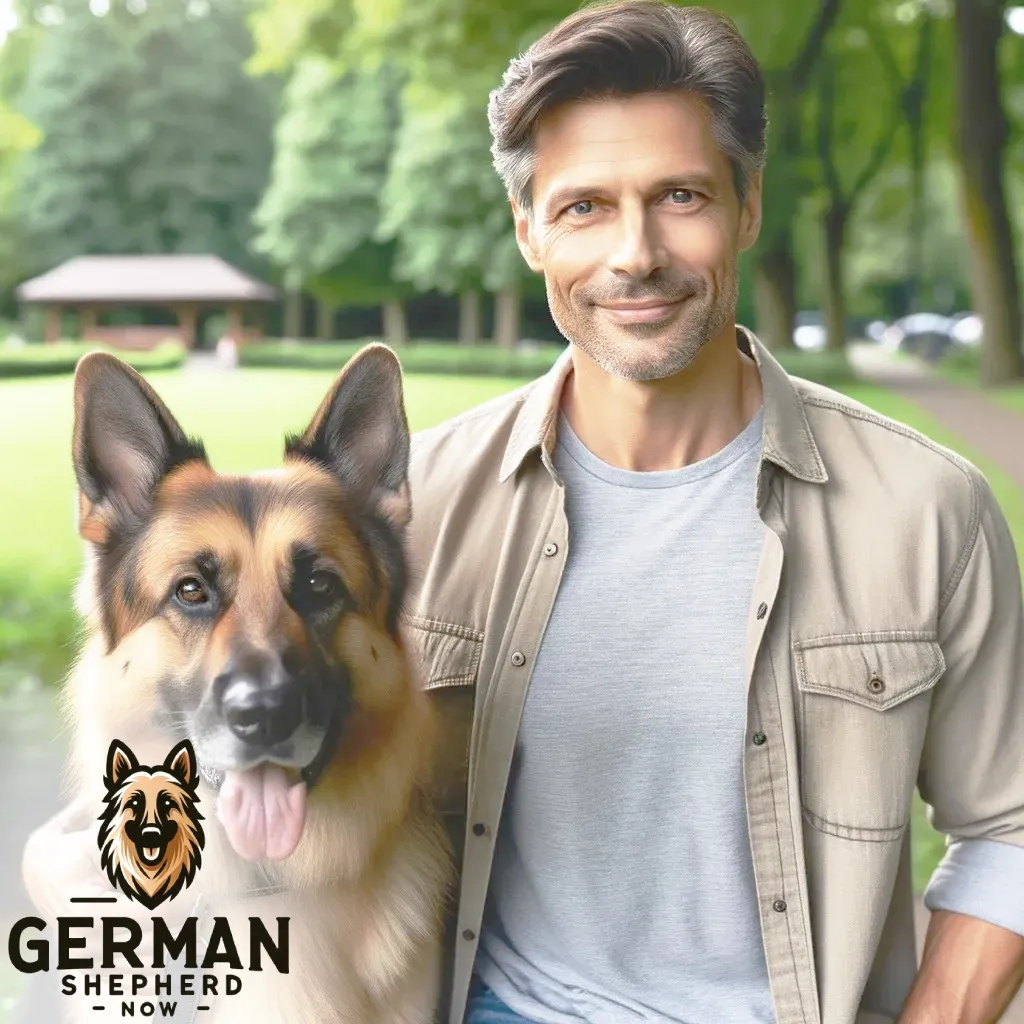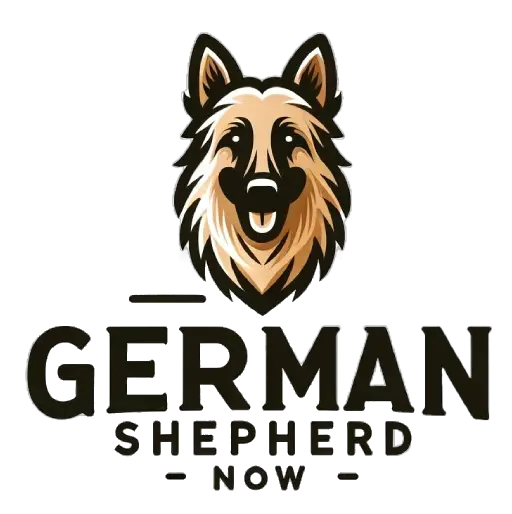What Are The 5 Types Of German Shepherds

The German Shepherd, a breed renowned worldwide for its intelligence, loyalty, and versatility, symbolizes strength and grace.
Today, German Shepherds are celebrated for adapting to various roles, from family companions and service dogs to police and military partners.
This remarkable adaptability is partly due to the different types within the breed, each with unique characteristics and abilities.
Five Main Types of German Shepherds Breed –
American Show Line German Shepherds
American Show Line German Shepherds are distinguished by their unique physical appearance, most notably their sloping back, which sets them apart from other lines. This striking feature combines a well-proportioned body, a handsome head, and a graceful yet strong build.
Bred primarily for conformation shows, the breeding goals for these dogs heavily emphasize aesthetics.
Breeders focus on producing dogs that adhere to the American Kennel Club’s breed standard, prioritizing traits that enhance their show ring appeal. While their appearance is paramount, they are recognized for their friendly and approachable demeanor.
In dog enthusiast communities, they are often admired for their beauty and are commonly seen in show rings, though they are also loved as family pets due to their gentle nature.
| Quality | Description |
| Appearance | Distinctive sloping back, well-proportioned body, handsome head. |
| Temperament | Friendly, approachable, gentle nature, good with families. |
| Physical Traits | Graceful, strong build, bred for confirmation to AKC standards. |
| Common Roles | Frequently seen in show rings, they are also popular as family pets. |
European Show Line German Shepherds
European Show Line German Shepherds differ in appearance and breeding standards from their American counterparts.
While still bred with an emphasis on appearance, European standards demand a more balanced focus, considering aesthetics and working abilities.
These Shepherds typically have a straighter back and a more robust build, conforming to the standards set by the Fédération Cynologique Internationale. They are known for their versatility, excelling in showings and various working roles.
Commonly, they are involved in obedience, tracking, and herding, showcasing their intelligence and trainability.
Their balanced nature makes them suitable for various activities, from competitive sports to service and therapy work.
| Quality | Description |
| Appearance | Well-proportioned body, straighter back than American lines, strong build. |
| Temperament | Balanced, loyal, and protective, suitable for families. |
| Intelligence | Highly intelligent, quick to learn and adapt. |
| Work Ethic | Strong drive for work, excels in various roles. |
| Health | Prone to certain genetic health issues, regular check-ups are recommended. |
| Trainability | Eager to please respond well to training. |
| Social Behavior | Good with children and other pets when socialized properly. |
Working Line German Shepherds
Working Line German Shepherds are bred primarily for their working capabilities rather than their appearance.
Physically, they tend to be more compact and agile, with a strong, muscular build suited for rigorous activities.
Their temperament is characterized by high energy, focus, and drive, making them ideal for demanding work environments.
These dogs are commonly employed in police and military roles, search and rescue operations, and as service dogs. They are valued for their resilience, intelligence, and eagerness to work.
The traits that make them suitable for these roles include their strong work ethic, quick learning abilities, instinctive protective nature, and ability to remain calm and focused under pressure.
| Quality | Description |
| Physical Build | Compact, agile, and muscular, suited for rigorous activities. |
| Temperament | High energy, focused, and driven, ideal for demanding work environments. |
| Intelligence | Exceptionally intelligent, quick to learn, and understand complex tasks. |
| Work Ethic | Strong work ethic, resilience, and eagerness to perform assigned tasks. |
| Adaptability | Adaptable to various environments and situations, reliable in diverse roles. |
| Trainability | Highly trainable, responsive to commands, and capable of advanced training. |
East German DDR German Shepherds
East German DDR German Shepherds have a rich history, originating during the Cold War in East Germany. Bred for border patrol, these dogs are known for their sturdy build and strong work ethic.
They have a distinct physical appearance with a heavier bone structure, dark pigmentation, and a large head. Their breeding focused on traits necessary for endurance, strength, and vigilance.
Today, while their roles have diversified, they are still highly valued for their working abilities. They are often employed in police and military roles, search and rescue, and as loyal and protective family pets.
Their steadfast nature and resilience testify to their breeding during a challenging historical period.
| Quality | Description |
| Origin | Originated in East Germany during the Cold War for border patrol. |
| Physical Build | Sturdy build, heavier bone structure, large head, dark pigmentation. |
| Temperament | Loyal, resilient, vigilant, and capable of independent thinking. |
| Work Ethic | Strong work ethic, bred for endurance, strength, and vigilance. |
| Common Roles | Traditionally used for border patrol, it is now used by police, military, search and rescue, and as family pets. |
| Coat Type | Thick, dense coat, suitable for harsh weather conditions. |
Czech Working Line German Shepherds
Originating from Communist Czechoslovakia, Czech Working Line German Shepherds were primarily bred for border patrol and military work. A robust and sturdy physique for endurance and strength characterizes them.
These dogs have a strong work drive and are highly trainable, making them well-suited for demanding tasks. Today, they are used in security and border control and excel in various roles, including police work, search and rescue, and as service dogs.
Their adaptability and physical and mental capabilities make them preferred for roles requiring resilience, intelligence, and a strong protective instinct.
| Quality | Description |
| Origin | Originated in Communist Czechoslovakia, primarily for border patrol and military work. |
| Physical Build | Robust and sturdy physique, designed for endurance and strength. |
| Temperament | Highly trainable, alert, and loyal with a strong protective instinct. |
| Work Drive | Strong work drive, adaptability, and excelling in demanding tasks. |
| Roles | Used in security, police work, search and rescue, service dogs, and as loyal family pets. |
Types of German Shepherds Based on Their Coat
German Shepherds are not only diverse in their roles and breeding lines but also in their coat types.
The breed exhibits a variety of coat lengths and textures, each with its unique characteristics and care requirements.
Understanding these different coat types is essential for proper grooming and maintenance and can also be a factor in choosing a dog that best fits an individual’s lifestyle or climate.
In this section, we’ll explore the various coat types found within the German Shepherd breed, highlighting the distinct features and considerations for each.
1. Short Coat
The short coat is the most common type among German Shepherds. This coat is dense and lies close to the body, providing good protection against weather elements.
Short-coated German Shepherds require regular brushing to manage shedding, especially during seasonal changes.
2. Medium Coat
Medium-coated German Shepherds have slightly longer and fuller fur than the short-coat variety. This coat type offers more insulation, making these dogs well-suited to colder climates.
Regular grooming is important to prevent matting and to keep the coat healthy and clean.
3. Long Coat
Long-coated German Shepherds have a distinct appearance with their longer, flowing fur. Due to its rarity, this coat type is less common and is not recognized in some show standards.
Long-haired German Shepherds require frequent grooming to avoid tangles and maintain coat health.
4. Plush Coat
The plush coat is a variation that is denser and fuller than the standard short coat but not as long as the typical long coat. This coat type gives the dog a luxurious, plush appearance and is often sought after for its aesthetic appeal.
Plush-coated German Shepherds need regular grooming to keep their coats in good condition.
5. Double Coat
Most German Shepherds have a double coat, a dense outer coat, and a softer undercoat. This coat type provides excellent insulation and protection from the elements.
The undercoat sheds seasonally, requiring additional grooming during these periods to manage shedding and maintain coat health.
Each coat type contributes to the German Shepherd’s adaptability to different environments and conditions, showcasing the breed’s versatility in roles, capabilities, and physical attributes.
Regular grooming and care are essential for all types, ensuring the health and well-being of these magnificent dogs.
Types of German Shepherds Based on Their Color
The German Shepherd breed is diverse in terms of its roles and coat types and its array of coat colors.
Each color variant has a unique genetic makeup and aesthetic appeal, contributing to the breed’s popularity and recognition.
In this segment, we explore the different color types found in German Shepherds, delving into the characteristics and distinctiveness of each.
Understanding these color variations is important for breed enthusiasts and potential owners, as it reflects the breed’s rich genetic diversity.
1. Black and Tan
Black and tan is the most common color combination in German Shepherds. This classic look typically features a predominantly tan coat with black markings on the back, face, and tail. The pattern can vary greatly from dog to dog, making each unique.
2. Sable
Sable German Shepherds have multi-colored individual hairs, giving them a distinctive, wolf-like appearance. This color can range from light silver to dark gray and is known for changing as the dog matures.
3. Solid Black
Solid black German Shepherds are less common and are known for their striking, uniform black coats. This color results from a recessive gene and can occur in any litter, regardless of the parents’ colors.
4. White
White German Shepherds, often mistaken for a different breed, are known for their pure, snowy coats. This color results from a recessive gene and is not recognized in some show circles, but it does not affect the dog’s health or abilities.
5. Blue and Liver
Blue and liver-colored German Shepherds are rare and result from diluting the standard black and tan colors. Some breed standards do not accept these colors, but they are sought after by some for their uniqueness.
6. Bi-Color
Bi-color German Shepherds are primarily black with tan or red markings on their legs, face, and chest. This color type often gives the appearance of a predominantly black dog with limited markings.
Each color type of German Shepherd carries its charm and personality traits, adding to the breed’s allure.
While color does not typically affect a dog’s temperament or health, it is an important aspect of the breed’s identity. It contributes to the German Shepherd’s iconic status in the canine world.
Conclusion: The German Shepherd’s Rich Diversity
In summary, the German Shepherd breed showcases remarkable diversity, from the show-focused American and European lines to the robust working Czech and DDR lines, complemented by a range of coat colors and types.
Each variant brings unique traits, catering to various roles and preferences. This diversity highlights the breed’s versatility, making it a favorite for family companionship and specialized work.
Understanding these differences is crucial for appreciating the full scope of this beloved and adaptable breed.

I’m Martin, and I grew up in the super cool city of Seattle. You know, the place with all the incredible mountains and forests? Yeah, that’s my playground!
Ever since I was little, I’ve been all about nature. I used to wander around the woods with a notebook, doodling all the cool plants and animals I’d find.
